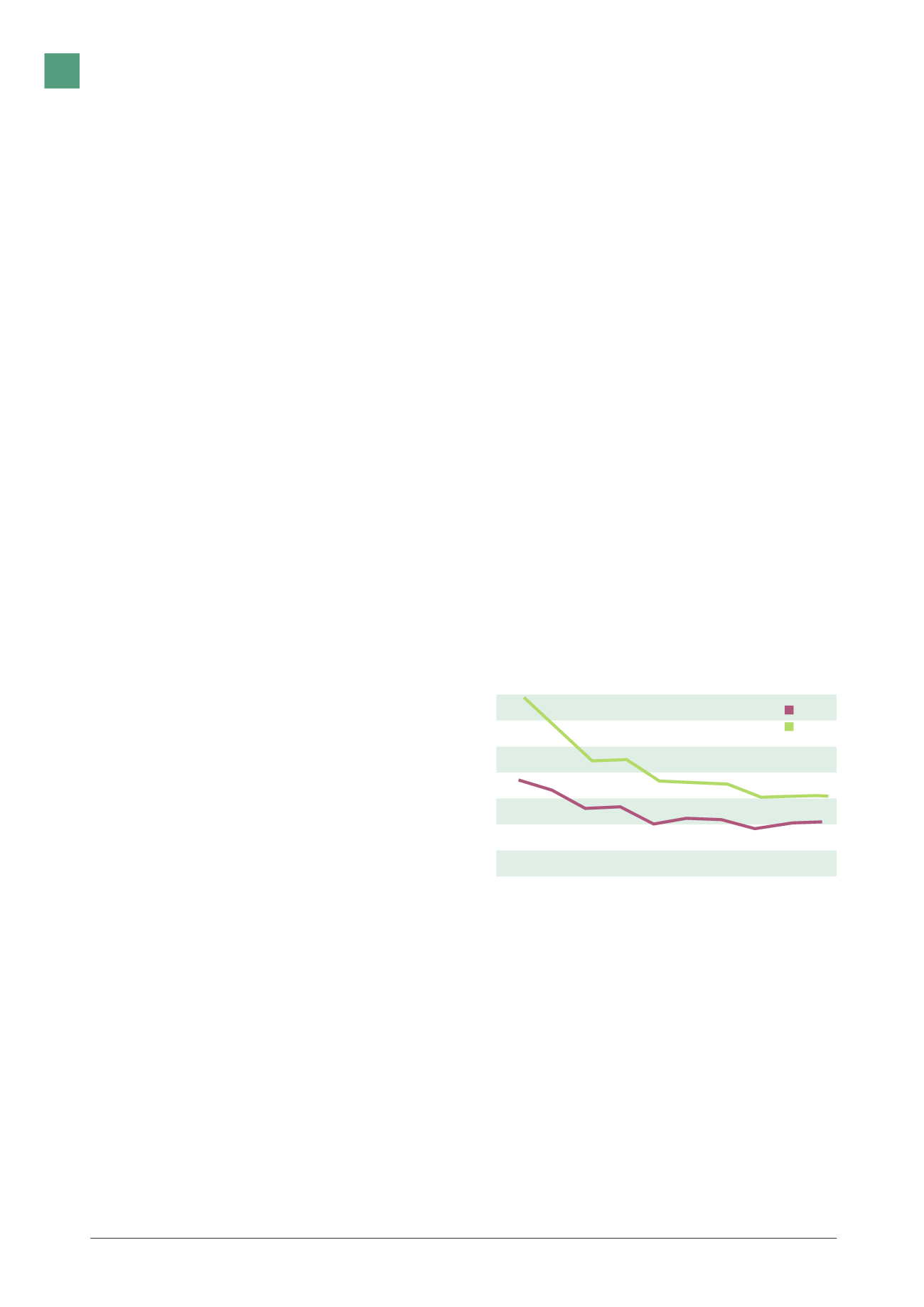

98
LISI 2016 FINANCIAL REPORT
–
–
other operating tools in the LISI Excellence HSE program aiming
at providing a response to the problems targeted by the excellence
focuses.
The LISI Group Senior Management became seriously involved at its
highest levels in the areas of health, safety and the environment.
At all levels, the Group has as its objective to:
–
–
reach the excellence level of performance in the areas of Health and
Safety, while keeping control over the occupational risk generated
by its activities;
–
–
Make Health & Safety a vector of continuous improvement, a means
to move forward, including in areas that are not directly related to it.
In order to ensure and achieve this goal, LISI has adopted a HSE
(Health Safety Environment) organization to identify key areas for
improvement, prioritize goals, and derive the appropriate actions. This
organization is based on the international OHSAS 18001 standard
(international standard governing the management system of health
and safety at work).
In order to provide itself with the resources to succeed in this field, each
production plant has at least one HSE Officer whose role is to lead the
HSE activity for his plant and is the guarantor for the implementation
of an HSE management system.
In addition, the LISI Group has an HSE Steering Committee whose
role is to analyze accidents and major incidents within the Group
and to establish HSE strategies aimed at reducing occupational risk
related to work, the environment and loss of goods. The Committee is
chaired by the Chairman and Chief Operating Officer of the LISI Group
and the Director of Manufacturing and Procurement. It comprises the
HSE Managers from each division, the LISI Group HSE Manager (who
leads it) and the insurance broker working on behalf of the LISI Group.
Finally, every three years, a HSE Forum bringing together the Senior
Management, all the site Directors and the site HSE Managers is
organized to determine the objectives in the areas of Health, Safety
and the Environment for the next three years.
Furthermore,
technically
, LISI is constantly working to improve its
workstations. Thus, in 2016, LISI invested €8.1 million in the field of
safety and the environment, including for the safety of its machinery
and for the implementation of ergonomic facilities and assistance in
handling.
Then, from an
organizational
point of view, the sites implement a
health and safety management system that is compliant with the
international standard OHSAS 18001. Furthermore, all the industrial
sites (excluding the sites in the Forging & Casting Business Group
acquired in 2014) have been certified to this same standard by an
independent external organization.
The LISI group has made huge efforts in terms of
behavior
, as the
point here is mainly to give safety the place it deserves: it should be
the primary concern at the heart of workshops, since this is where
the vast majority of accidents occur. This is materialized by the fact
that Safety is the first issue dealt with during the daily PSM rituals
(Problem Solving Management) at each level of plant management
(Autonomous Production Group – Autonomous Production Unit –
Site).
In addition, in 2016, LISI continued the implementation of a Safety
Culture program, which must:
–
–
deal with behavior-based causes of workplace accidents;
–
–
enable the management (from the plant manager to the shift
supervisors) to understand the behaviors and give them the levers
to act against them;
–
–
develop a Safety Culture within the teams through the deployment
of a structured communication campaign.
Each employee, whether operator or manager, builds this safety culture.
Everyone should participate in creating a work environment where risk
is under control. And each employee must also pay attention to their
own safety as well as that of their colleagues.
1.4.2
I
Review of the agreements with trade unions
or employee representatives on health and safety at work
The agreements related to health and safety at work are incorporated
into the list presented in 1.3.2.
1.4.3
I
Accidents at work, including their frequency
and severity, and occupational diseases
Changes in TF0 and TF1 since 2007
TF0
TF1
2007 2008 2009 2010 2011 2012 2013 2014 2015 2016
0
5
10
15
20
25
30
35
At the end of 2016 the frequency rate of workplace accidents with
work stoppage which involved LISI employees or temporary staff (TF0)
became stable after increasing in 2015. Nevertheless, the general
trend has been highly encouraging over recent years as the LISI Group
improved its TF1 by 30% compared to 2010 and 56% compared to
2007. This confirms the effectiveness of the continuous efforts made
by all employees in terms of Health & Safety.
The frequency rate of occupational accidents with or without lost time
(TF1) thus stands at 14.32.
In 2016, some of the Group’s sites, including those of Beijing, Lure,
Monterrey, Parthenay, Rugby, Tangiers and Vignoux-sur-Barangeon
recorded no workplace accidents with or without lost time.
Corporate social responsibility
6


















